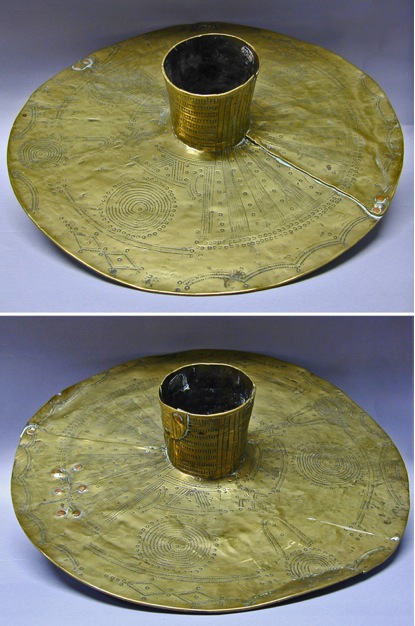Brass Anklets
Possibly Igbo people, Nigeria, early 20th century
 Collected by A. F. B. Bridges before 1923 and donated by him in 1975; 1975.4.1The Igbo of Nigeria have developed forms of personal decoration that are both vivid artistic statements and a way of communicating values and messages. The most spectacular costumes are created for ceremonial occasions such as festivals, meetings of chiefs, or coming-of-age rites. However, ornamentation was also a part of everyday dress, as illustrated by these extravagantly large brass anklets, known as adalà or ogba.
Collected by A. F. B. Bridges before 1923 and donated by him in 1975; 1975.4.1The Igbo of Nigeria have developed forms of personal decoration that are both vivid artistic statements and a way of communicating values and messages. The most spectacular costumes are created for ceremonial occasions such as festivals, meetings of chiefs, or coming-of-age rites. However, ornamentation was also a part of everyday dress, as illustrated by these extravagantly large brass anklets, known as adalà or ogba.
Before the 1920s, girls in the north-central region wore such anklets but in a fashion that started in the more southerly regions and spread north, unmarried girls wore long spiral coils of brass instead. These covered the entire lower leg and sometimes extended halfway up the thigh, like metal leggings. The coils were removed at marriage and could be exchanged for the adalà, which were then sometimes worn into middle age.
Adalà were heavy and awkward but brought great prestige. They were cold-beaten from a T-shaped piece of brass by Awka blacksmiths and fixed around the leg. The Anglican missionary, G. T. Basden, who lived among the Igbo in the early 20th century, wrote: "Once hammered on, they are permanent evidences of deluded vanity, and from that hour the wearer can never again stand, sit or lie in a normal position." Certainly when walking, each leg had to swing wide and clear of the other to manage the weight and avoid tripping over.
Adalà typically featured geometric and zoomorphic designs. The designs on this pair are identical as was usual. Amid both the original and repair rivets can be seen spiral shapes representing snakes; lizard creatures; radial lines from the centre that could be sunrays or emulations of the ichi (scarification) marks on men's cheeks; and various horizontal or vertical lines representing streams or flowing water. They are not dissimilar to the uli patterns painted on the faces and bodies of Igbo men and women.
